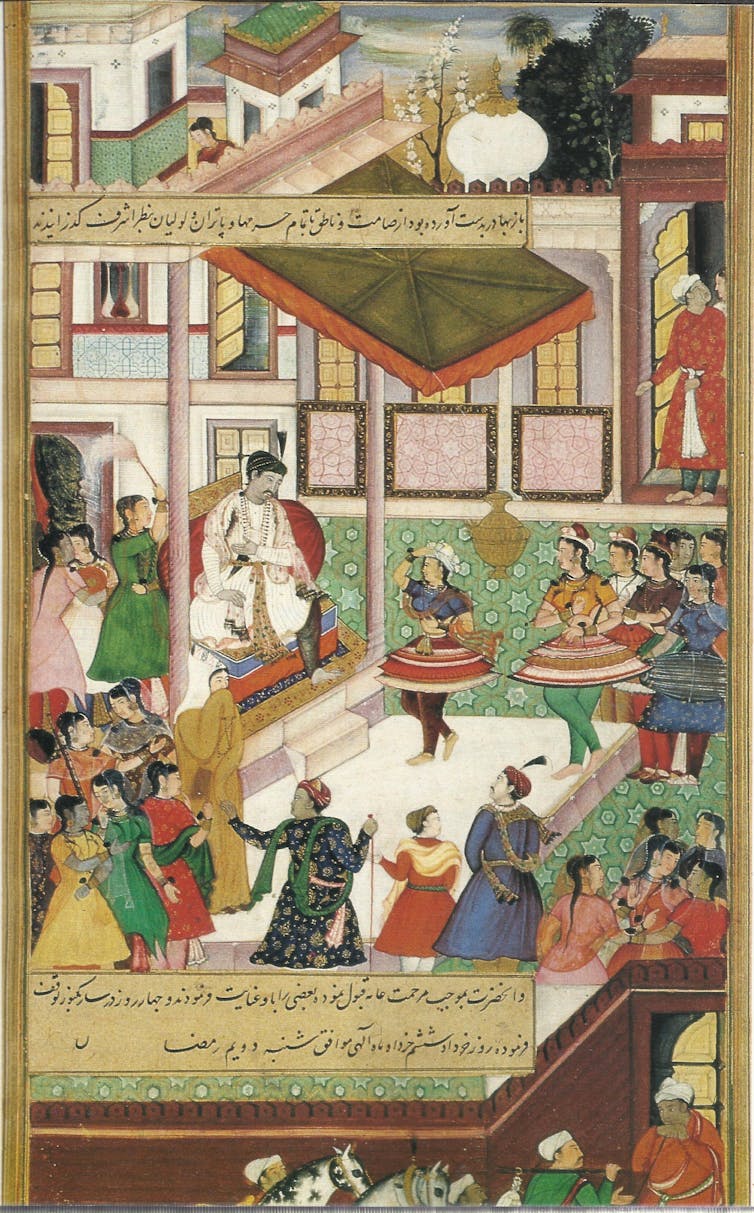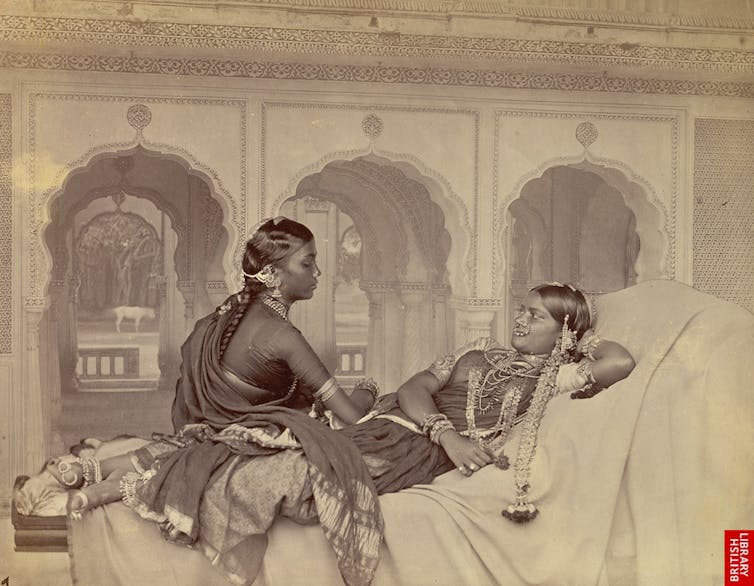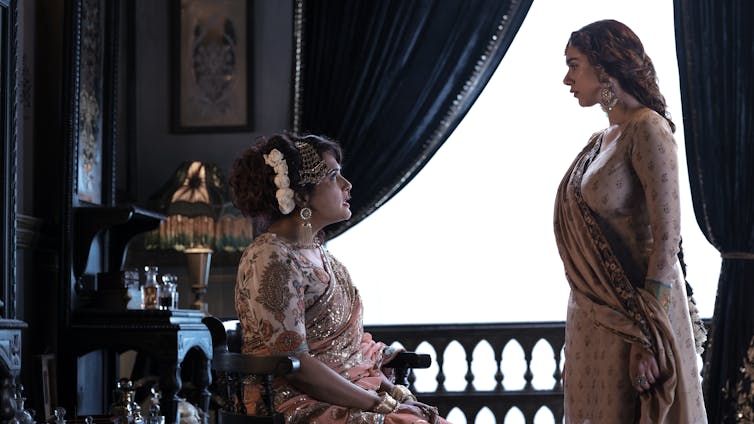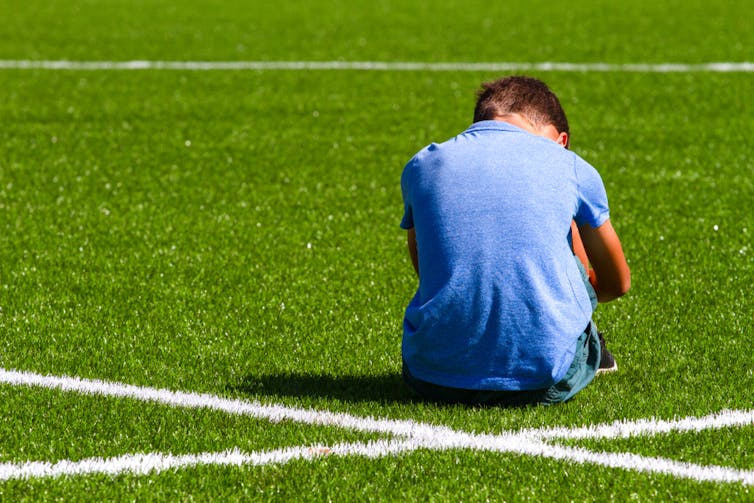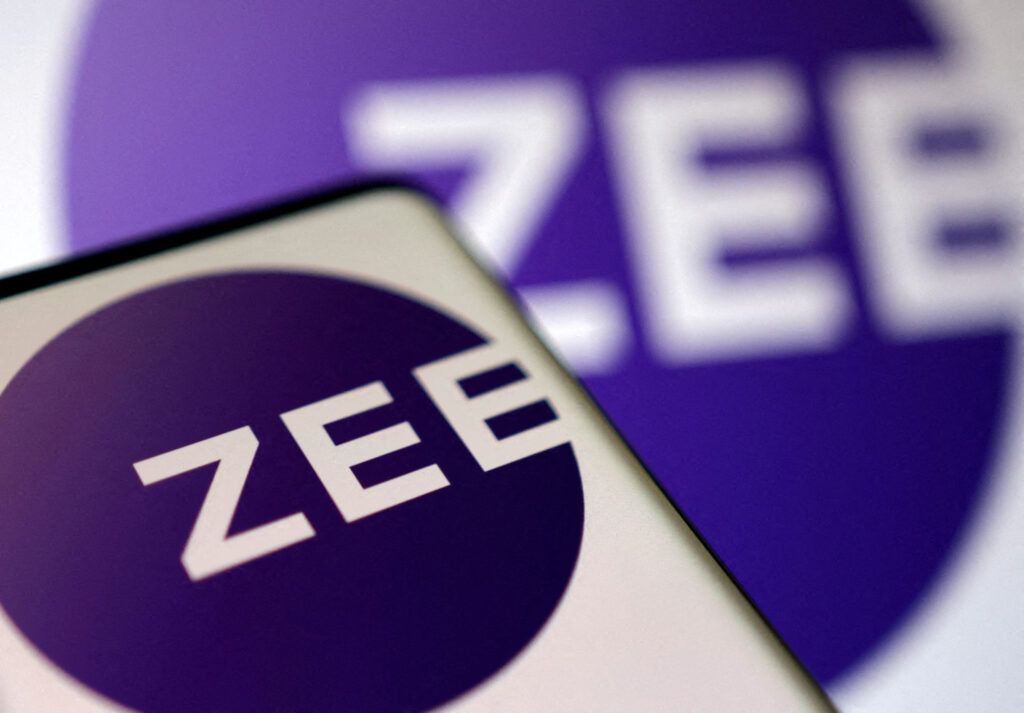Sunday, 13 April 2025
Post-apocalyptic 'The Last of Us' more timely than ever, say stars
Monday, 20 January 2025
Why the Australian Open’s online tennis coverage looks like a Wii sports game
The 2025 Australian Open (AO) broadcast may seem similar to previous years if you’re watching on the television. However, if you’re watching online via the official Australian Open TV YouTube channel you’ll encounter a distinctly different kind of coverage.
The channel’s “AO Animated” coverage looks more like a Wii Sports tennis match than a real one, with players’ physical forms replaced with virtual avatars.
Fans that have viewed the live streams are divided, with comments ranging from “This is the best kinda live” to “What the hell is this? Why can’t we watch normal? This is utterly ridiculous”.
So what’s the answer? Why can’t we watch normal?
How does it work?
The system that creates the AO Animated streams uses 12 cameras that track the silhouette of the players. This data is then fed into a system and stitched to 29 points on an animated character – the player’s graphical reproduction. The result is a live stream with a two-minute delay that includes commentary and sound from the court.
For those who have seen it, you’ll notice the system is far from perfect. There are glitches with the ball, racquets vanishing and reappearing, clothes changing or appearing to have holes, and fingers remaining straight when they should be gripping the racquet. As Tennis Australia’s director of innovation, Machar Reid, notes, “It’s not as seamless as it could be.”
Although AO Animated was introduced last year, it has only recently become a major talking point among tennis fans. Many learned about the animated live streams through an X post by tennis reporter Bastien Fachan, who points them out as a way for the Australian Open to sidestep limits placed by current media rights agreements.
Nine has paid A$425 million for a five year deal (until 2029) that allows the network the domestic linear and digital rights to the Australian Open and lead-in events, including the United Cup.
Internationally, the BeIN media group has the broadcast rights for 24 countries across the Middle East and North Africa, while ESPN has held the broadcast rights for the United States and Canada since 1984 (and will remain these rights until at least 2031).
Yet the AO has found a way to sidestep these exclusive media rights deals by using animated avatars on YouTube – a decision that raises several questions about the future of sports broadcasting and media rights deals.
Future media rights
As of when this article was published, the AO Animated video of Botic van de Zandschulp playing Alex de Minaur had more than 35,000 views. The most viewed match, with more than 160,000 views, was between Andrey Rublev and Joao Fonseca.
But these are paltry numbers compared to the 1.9 million Australians who tuned into Nine’s TV broadcast of the night session on day three (in which Botic van de Zandschulp played Alex de Minaur).
A closer look at the ratings also reveals it is overwhelmingly older Australians who are tuning in, with 838,000 viewers aged 25–54, compared to 414,000 aged 16–39. You might suspect younger Australian are streaming the tennis via Nine’s video-on-demand platform, but even here an older viewership dominates.
It’s possible many young people are turning to other platforms such as YouTube, which reportedly had almost 21 million active users in Australia in 2024 (almost 80% of the population). In this light, what looks like an effort by Tennis Australia to dodge media rights deals could also be viewed as an effort to reach new, younger audiences.
It seems Tennis Australia’s Machar Reid had this in mind. He told The Guardian the AO Animated videos were targeting the “community that engages with animated or virtual or gaming products”.
This strategy makes sense. Millions of young people are already hooked on YouTube’s huge selection of gaming content. For instance, last year videos related to the viral Roblox game Dress to Impress were viewed more than 4 billion times in the US alone, according to YouTube’s data.
Similarly, more than 645 million people in the United Kingdom watched videos related to the video game franchise EA Sports FC in 2024. This number was even greater in the Middle East and North Africa, at 950 million.
AO is not the first
The AO is not the first to live-stream sports matches in which players are animated. Last year, North America’s National Hockey League used player tracking technology to stream a “MultiVersus NHL Face-Off” game. The players of Colorado Avalanche and the Vegas Golden Knights were replaced with Warner Brothers characters including Batman, Bugs Bunny and the Scooby Doo gang.
The National Football League also recreated a simulation of a live game in which players from the Cincinnati Bengals and Dallas Cowboys were replaced by Simpson’s characters. The entire look and feel of the broadcast reflected The Simpsons.
These US-based examples, together with the recent AO Animated coverage, suggest animated simulations could play a larger role in future media rights deals – and could provide media rights holders unique marketing and collaboration opportunities.
In the future we may see an expansion of the AO Animated live streams. It’s possible the Mii-style characters could even be replaced with popular characters, similar to the examples above. Such a change would further enhance Tennis Australia’s ability to collaborate with its media rights holders, both domestically and internationally.![]()
Marc C-Scott, Associate Professor of Screen Media | Deputy Associate Dean of Learning & Teaching, Victoria University
This article is republished from The Conversation under a Creative Commons license. Read the original article.
Friday, 3 January 2025
Australia has a remarkable history of outdoor cinema. Here’s why Netflix will never beat it
 Dendy Powerhouse Outdoor Cinema
Ruari Elkington, Queensland University of Technology
Dendy Powerhouse Outdoor Cinema
Ruari Elkington, Queensland University of TechnologyIn December 1916, as war raged in Europe, an entrepreneurial pearl diver took a chance on some bleeding-edge technology and installed an outdoor cinema in one of the country’s most isolated towns – Broome, Western Australia.
Ted Hunter didn’t know much about cinemas. Not many people did at the turn of the 20th century. But that didn’t stop him beginning what has become a long history of outdoor cinema exhibition in Australia.
Sun Pictures in Broome opened with Jack Hulcup’s 1913 silent film Kissing Cup, in which a “squire’s jockey” escapes kidnappers and gallops across the Isle of Wight in time to win the race. Huzzah.
More than a century later, Sun Pictures still stands – the world’s oldest operating open-air cinema.
 Sun Pictures was often subject to tidal flooding prior to a levee built in 1974. Locals have shared stories of watching films with fish swimming around their feet. Wikimedia, CC BY-SA
Sun Pictures was often subject to tidal flooding prior to a levee built in 1974. Locals have shared stories of watching films with fish swimming around their feet. Wikimedia, CC BY-SAWhile the Guinness World Record is a nice-to-have, Sun Pictures’ survival has been ensured not by the latest Hollywood blockbuster, but by what the cinema offers locals and visitors each night: a moviegoing experience that is at once unique and familiar.
Segregation at the movies
Before opening Sun Pictures, Hunter made his money as a master pearler. Pearl shells, which were turned into mother-of-pearl buttons, transformed the economic life of Broome in the late 1800s. Despite being so isolated, the pearling industry brought great riches to the town, while also entrenching workers along racial lines.
Racial segregation was firmly present in Broome’s “picture garden” for the first half of the 20th century. White Australians and their kids were seated in the middle, with Chinese and Japanese patrons behind them. Malays, Filipinos and First Nations people entered separately and were seated at the sides, or remained standing.
Aboriginal rights activist Charles Perkins would later directly challenge the segregation of Australian cinemas in his 1965 “Freedom Ride” throughout rural New South Wales.
Outdoors, from the comfort of your car
My colleague Tess Van Hemert and I have spent the past three years researching the cultures and practices of cinemagoing and how cinema sites shape this experience.
Outdoor cinemas – whether they be the picture gardens of Broome or the Yatala Drive-In – function as special sites of culture, connection and community.
During COVID lockdowns, social distancing measures particularly invigorated drive-in cinema attendance. But even after lockdowns ended, David Kilderry, the long-time operator of Melbourne’s Lunar Drive-in, remains clear on the appeal:
You could open up the car or even sit outside it and if cool, hop back inside and snuggle up in private. […] You can talk about the film as it runs. Kids can ask questions and parents can explain. Patrons can use phones during the film without interrupting others, and babies and infants won’t annoy other customers […] The drive-in has always been more than just a movie experience. It’s where the two icons of the 20th century come together: the motion picture and the automobile.
While the Lunar was shuttered in 2023, Kilderry said this decision was less about the 400,000 annual patrons and more about the land tax implications of keeping a site of that size viable.
But it’s not all doom and gloom for drive-ins. Kilderry notes many operators now own their land, rather than trying to constantly negotiate leases.
There are currently about 12 drive-ins running regularly across Australia, with a few more opening for the occasional screening. New drive-in developments are also planned for Perth, pending local consultations.
Connecting with others and the environement
Beyond drive-ins, Sun Pictures is in good company with a range of locations around the world that actively celebrate outdoor cinema.
During the European summer, open-air cinemas are popular in countries such as Germany and Italy. In Bologna, three large piazzas – Piazza Maggiore, Arena Puccini and Piazzetta Pasolini – are set up as cinemas for the annual Cinema Ritrovato festival.
Closer to home, the University of Western Australia’s Somerville Auditorium, framed by a “tree cathedral” of mature Norfolk pines, has long been a place of unique outdoor cinema experiences.
Perth Festival film programmer Tom Vincent understands the distinct pleasures of outdoor cinemagoing:
The m ost memorable cinemagoing anywhere will always engage the audience’s sense of place, usually through architecture and experience design. […] It includes a natural sensory mix that includes river breezes, ambient sounds and wildlife, alongside a sense of grandeur and good programming. Good outdoor cinema says ‘look, we are here, engage all your senses’.
But while seasonal outdoor cinemas such as the Moonlight Cinemas continue to operate around Australia – alongside local council park screenings – openings of new permanent outdoor cinemas are rare.
Phoebe Condon, manager of the new permanent Dendy Powerhouse Outdoor Cinema in Brisbane, explained how the site positions itself as a high-value leisure experience:
It’s more than just a night at the movies – it’s a destination […] What truly sets us apart from other outdoor cinemas is our focus on creating an elevated, year-round experience.
This framing of outdoor cinema as an “elevated experience” is vital. While the cost of cinemagoing has come up as a key consideration in our research (especially in the current economic context) the industry is quick to remind consumers it remains affordable compared with other out-of-home arts and leisure experiences such as live sports, music, comedy and theatre.
Despite legitimate cost-of-living concerns, census data continues to show cinemagoing as the nation’s most popular cultural activity.
Why Neflix can’t replace cinemas
Our research on Australian cinemagoing supports broader arguments for a more holistic understanding of cinema’s value in society. Cinemagoing shouldn’t be compared to your Netflix subscription, but to other leisure activities people get up and leave the house for.
As the International Union of Cinemas notes, “films reflect national culture or subcultures and the wider world to the audience; they frame moral and political discussions; and they entertain and educate”.
We also know cinemagoing has never stood still. Ever since Hunter took a chance on outdoor cinema in 1916, these spaces have evolved constantly to respond to new challenges and shifting appetites.
But one aspect remains the same: whether sat under the stars, or parked in a lot, Australians continue to see the value in leaving their homes to connect and share in new stories on the big screen.![]()
Ruari Elkington, Senior Lecturer in Creative Industries & Chief Investigator at QUT Digital Media Research Centre (DMRC), Queensland University of Technology
This article is republished from The Conversation under a Creative Commons license. Read the original article.
Thursday, 2 May 2024
Who were the real courtesans at the heart of Netflix’s Heeramandi?
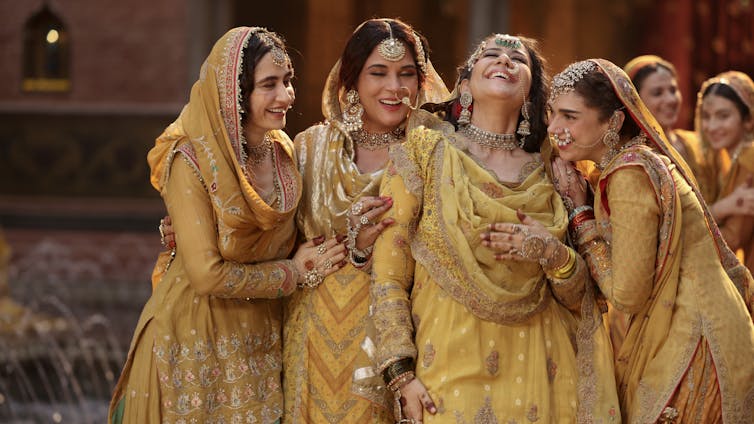 Netflix
NetflixIndian director Sanjay Leela Bhansali is known for his big-budget Bollywood production, featuring grand sets, star casts, meticulously choreographed dance sequences and lavish costumes, jewellery and furnishings. His new series for Netflix, Heeramandi: The Diamond Bazaar, lives up to these expectations.
Against this visually rich backdrop emerge the scheming, menacing and murderous courtesans of Heeramandi.
The series is set in Heeramandi, a historical red-light district of Lahore in present-day Pakistan. It unfolds against the backdrop of the Indian freedom struggle against British rule.
The show is an entanglement of plot lines – a murder investigation, a war of succession, a budding love story and a courtesan’s secret involvement in a rebellion against British rule.
Eventually, all characters and storylines converge around the central theme of anti-colonial nationalism. Driven by nationalist fervour, the courtesans call themselves “patriots” and willingly sacrifice their careers and lives for the country.
But who were the real courtesans?
Role models for female independence
The show takes creative liberties by distorting the lives and timelines of the historical courtesans.
The North Indian tawa’ifs (courtesans), or nautch-girls (dancing girls, as the British called them), were cultural idols, female intellectuals and entrepreneurs.
Dating back to ancient India, these women were trained in music, dance, fashion, poetry, repartee, etiquette, languages and literature from a young age. Typically following a system of matrilineal inheritance, courtesans passed down their professional knowledge and skills to talented daughters of the household.
Once trained, courtesans attracted patronage from royal courts, feudal aristocrats and colonial officers.
This unique class enjoyed privileges not afforded to most women in Indian society, such as education and personal income. They led glamorous lifestyles, wielded power and wealth, and paid taxes.
As independent professionals, they contributed to Indian arts and culture, travelled extensively, made connections with chosen kin and often embraced gender fluidity.
Their financial, political and sexual independence challenged patriarchal gender norms and restrictive Hindu moral laws that dictated the lives of women from upper-middle-class families.
Complicated relationships
In Heeramandi, the courtesans turn patriotic to avenge the British police officers for raping and killing the natives. While these actions are dramatic, the historical relationship between courtesans, the British empire and Indian nationalism was more complex.
The politically engaged Bibbojaan (Aditi Rao Hydari) mirrors Azizan Bai, a courtesan from Kanpur who is said to have financially supported the 1857 mutiny against the British East India Company.
While the mutiny was one of the most widespread anti-colonial revolts of the 19th century, Indian nationalism was not its primary aim, but a consequence. Azizan’s interest was in maintaining her patronage from the native rulers for her social and economic wellbeing.
After 1857, India’s governance shifted from the East India Company to the Crown, leading to the spread of British rule across India alongside Western education and Victorian morality. Meanwhile, nationalist leaders envisioned a nation as a pure land of sacred Hindu ancestors and valued chastity in women.
Both the imperial and nationalist ideals clashed with the courtesans’ sexual freedom.
In the 1890s, Hindu reformers and bourgeois nationalists joined Christian missionaries in organising anti-nautch campaigns that advocated boycotting them to “rescue” art and culture from perceived immorality. This led to the downfall of the courtesan class.
In Heeramandi, patronage diminishes and the women’s dreams of marriage fade. The courtesans shut down their salons, give up their careers and sacrifice their lives for the nation.
But historical courtesans were quick to reinvent themselves in the face of declining patronage and social stigma.
They turned to the power of modern technology. Gauhar Jaan, a famous courtesan, became a celebrated concert singer and gramophone artist, earning the title of “India’s Melba” in the international press.
In 1921, Gandhi asked Gauhar Jaan to perform for the Swaraj Fund. Aware of the ambiguous position courtesans held in nationalist discourse, she agreed on the condition that Gandhi attend her performance. When Gandhi failed to show up, she contributed only half of the raised amount to the cause.
Courtesans contributed significantly to the founding of the Indian film industry through their artistry, star power and capital investment. The first generation of female film stars came from courtesan backgrounds: Jaddan Bai, Kajjan Bai, Akhtaribai Faizabadi and Naseem Banu entered the industry as actors, singers, composers, directors and studio owners.
Later, some acted as managers and costume designers for their daughters, the emerging actors of the next generation.
By becoming modern-day artists, the courtesans preserved their art. They remained visible and relevant in a society that was increasingly obliterating women’s cultural contributions and diminishing their role as citizens in an emerging nation.
Patriarchal nationalism
In the show, a woman’s value is judged by her respectability, marital status and the presence of a male guardian controlling her sexuality. Courtesans refer to themselves as “birds in gilded cages” and dream of freedom from their courtesan lifestyle.
Here, the courtesans’ nationalism resonates with present-day far-right Hindu nationalists, seemingly promising women empowerment in nationalism but, in reality, reserving only regressive roles for women.
Heeramandi oversimplifies the multilayered persona of tawa’ifs. The series portrays them as melancholic victims yearning for patriarchal married bliss, while remaining marginalised in respectable society. But these women should be remembered as celebrated figures filled with joie-de-vivre, gusto and spiritedness.
They should be honoured for their strategies of self-representation and processes of self-determination, as they turned resilience into a way of life.![]()
Radhika Raghav, Teaching Fellow, School of Humanities and Social Sciences, University of Otago
This article is republished from The Conversation under a Creative Commons license. Read the original article.
Tuesday, 7 November 2023
Disney weighs options for struggling India TV business
Monday, 30 October 2023
What the David Beckham documentary tells us – and what it doesn’t – about controlling parents in sport
I was able to handle being abused by the fans […] because of the way my dad had been to me.
A poignant scene shows Beckham’s mother Sandra struggling with how hard his father Ted was on their son. Ted’s shouting often brought David to tears. When asked if he was too tough on David, Ted says:
No […] if I told him how good he was, then he’s got nothing to work at.
Throughout the documentary, Ted’s behaviour is rationalised by Ted and even Beckham himself as necessary to support David’s sporting trajectory. But David also said he was scared of his father’s feedback and felt compelled to practise for hours every day.
Other athletes with similar stories include Tiger Woods, Andre Agassi and Australian Jelena Dokic.
Too often, controlling behaviour by parents is portrayed as necessary for success as an athlete. But the evidence shows this idea is false. In fact, such an approach can be detrimental to both a child’s chances of sporting success and their wellbeing.
And it’s not just a problem with elite sport; our research shows it’s also occurring with community sport.
What we found
Our research found about one in three people we surveyed said they’d experienced abuse by a parent during their time in Australian community sport.
Psychological abuse by parents was reported by just under a third of our respondents, and included behaviours such as:
excessive criticism
insults and humiliation
excessively training to extreme exhaustion/vomiting
ignoring a child following a sport performance.
The controlling and abusive behaviours described above have been consistently normalised by parents, coaches and sporting organisations as being necessary to create “mentally tough” athletes ready for high-level competition.
However, there is no evidence abusive and controlling behaviours have a positive impact on performance.
Instead, there is ample evidence to indicate it:
harms children’s confidence and self-esteem
is associated with depression and anxiety.
Research shows when adults in community sport use what’s known as an “autonomy-supportive approach” – in which young people are empowered to make their own decisions and have their feelings validated – children can be more self-motivated.
An experiment at the 2012 Olympic Games found coaches with a more supportive approach achieved higher medal tallies than those who did not.
Most of this evidence has focused on coaching, but given many parents act as coaches for their children, these findings remain relevant.
Putting children’s experiences first
There is no evidence that controlling or abusive practices improve children’s performance in sport. But even if there was, sport performance should not be valued above a child’s health and wellbeing.
These behaviours would not be tolerated in different environments, such as workplaces or schools.
It’s time to move on from this debate in sport. So where to from here?
The sport system is complex, and while it’s easy to think it’s just a few problematic people, the reality is these practices have been normalised for generations.
Parents are repeating patterns from their own experiences and mirroring practices they see as normal in elite sport. There is no quick fix.
But we can all play a part by reflecting on our own behaviours and considering how we can prioritise children’s experiences and wellbeing.
Parents should focus on fun, learning new skills, enjoying the moment, and being part of a team so their kids can get the most out of the games they love.
Despite Beckham himself suggesting it was all worth it, the evidence suggests he was successful in spite of the high-pressure home environment, not because of it. ![]()
Mary Woessner, Lecturer in Clinical Exercise and Research Fellow, Institute for Health and Sport (iHeS), Victoria University, Victoria University; Alexandra Parker, Professor of Physical Activity and Mental Health, Victoria University, and Aurélie Pankowiak, Research Fellow, Institute for Health and Sport, Victoria University
This article is republished from The Conversation under a Creative Commons license. Read the original article.
Wednesday, 11 October 2023
Indian court dismisses plea by Zee’s ex-chairman, CEO over market regulator ban
Monday, 25 September 2023
Reality TV show contestants are more like unpaid interns than Hollywood stars
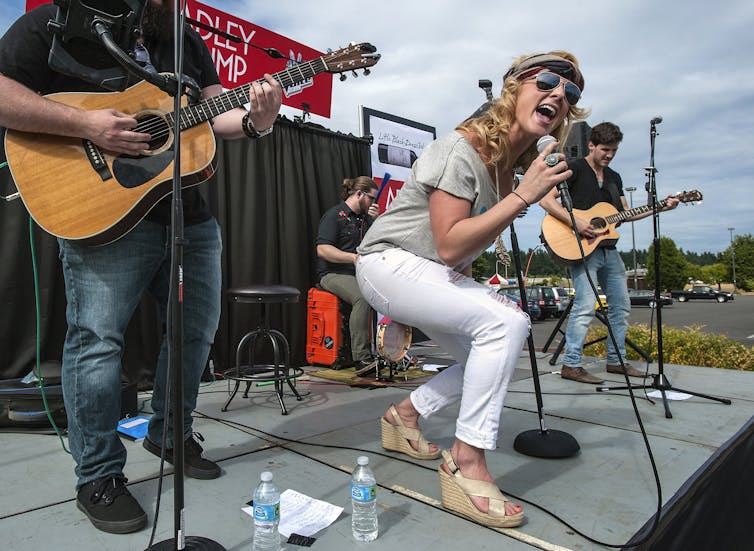 Country singer Adley Stump, a former contestant on NBC’s hit reality show ‘The Voice,’ performs at an Air Force base in Washington state. Joint Base Lewis McChord/flickr, CC BY-NC-SA
David Arditi, University of Texas at Arlington
Country singer Adley Stump, a former contestant on NBC’s hit reality show ‘The Voice,’ performs at an Air Force base in Washington state. Joint Base Lewis McChord/flickr, CC BY-NC-SA
David Arditi, University of Texas at ArlingtonIn December 2018, John Legend joined then-newly elected U.S. Rep. Alexandria Ocasio-Cortez to criticize the exploitation of congressional interns on Capitol Hill, most of whom worked for no pay.
Legend’s timing was ironic.
NBC’s “The Voice” had just announced that Legend would join as a judge. He would go on to reportedly earn US$14 million per season by his third year on the show. Meanwhile, all of the participants on “The Voice,” save for the winner, earned $0 for their time, apart from a housing and food stipend – much like those congressional interns.
The fall 2023 TV lineup will be saturated with low-cost reality TV shows like “The Voice”; for networks, it’s an end-around to the ongoing TV writers and actors strikes.
Whether it’s “The Voice,” “House Hunters,” “American Chopper” or “The Bachelorette,” reality shows thrive thanks to a simple business model: They pay millions of dollars for big-name celebrities to serve as judges, coaches and hosts, while participants work for free or for paltry pay under the guise of chasing their dreams or gaining exposure.
These participants are the unpaid interns of the entertainment industry, even though it’s their stories, personalities and talent that draw the viewers.
Dreams clash with reality
To conduct research for my book, “Getting Signed: Record Contracts, Musicians, and Power in Society,” I interviewed musicians around the country.
The book was about the exploitative nature of record contracts. But during my research, I kept running into singers who had either auditioned for or participated in “The Voice.”
On “The Voice,” singers compete on teams headed by a celebrity coach. Following a blind audition and various elimination rounds, the live broadcasts begin with four teams of five members apiece. These 20 contestants spend months working in Los Angeles and are provided with only their room and board. Each week, at least one player is eliminated. At the end of each season, the winner receives $100,000 and a record contract.
While some viewers might see reality shows like “The Voice” as launching pads for music careers, many of the musicians I spoke with were disheartened by their experiences on the show.Contestants audition for ‘The Voice’ ahead of its 24th season.
Unlike “American Idol,” where a number of winners, from Kelly Clarkson to Jordan Sparks, have made it big, no winners of “The Voice” have become stars. The closest person to “making it” from “The Voice” is the controversial country singer Morgan Wallen, who was infamously dropped by his label and country radio following the emergence of a video of him using a racial slur. And Wallen didn’t even win “The Voice”; in fact, he barely made it past the blind audition.
Former contestants repeatedly told me that the television exposure did little to help their careers.
Prior to joining the show, many of the musicians were trying to scratch out a living through touring or performing. They put their developing careers on pause to chase their dreams.
However, the show’s contracts have stipulated that contestants cannot perform, sell their name, image and likeness, or record new music while on “The Voice.” (The Conversation reached out to NBC to see if this remains the case for the current season, but did not receive a comment.)
This leaves the 20 finalists with no means to sell their music, even as they spend up to eight months competing. When the show’s losers return to performing, many of them have little new material to promote. By the time they drop a new single or album and announce a tour, some of them told me that they had lost a good portion of their following.
There is one group of people who receive meaningful exposure from these shows: the coaches and judges. Several singers, such as Gwen Stefani and Pharell Williams, have used “The Voice” to jolt their stagnating music careers. While earning millions as coaches and judges, these stars even use the show to promote their music – something the contestants themselves are barred from doing.
Paying these contestants is feasible. If Legend earned $13 million instead of $14 million, that spare million dollars could be dispersed to half of the contestants at $100,000 apiece – an amount that’s currently only reserved for the winner of the show. Cut the salaries of all four coaches by $1 million apiece, and it would free up enough money to pay all 20 contestants $200,000 each.
A gold mine for networks
“The Voice” is far from the only reality show to take advantage of the genre’s low overhead costs.
Over the past two decades, shows featuring Americans looking to buy houses or remodel their homes have exploded in popularity. HGTV cornered this market by creating popular shows such as “House Hunters,” “Flip or Flop” and “Property Brothers.”
Viewers might not realize just how profitable these shows are.
Take “House Hunters.” The show follows a prospective homebuyer as they tour three homes. Homebuyers featured on the show have noted that they earn only $500 for their work, and the episodes take three to five days and about 30 hours to film. The show’s producers don’t pay the realtors to be on it.
The low pay for people on reality TV shows matches the low budget for these shows. A former participant wrote that episodes of “House Hunters” cost around $50,000 to film. Prime-time sitcoms, by comparison, have a $1.5 million to $3 million per episode budget.
Sidestepping the unions
That massive budget gap between reality TV and sitcoms is not simply due to an absence of star actors.
Many scripted television shows are based in Los Angeles, where camera crews, stunt doubles, costume artisans, makeup artists and hair stylists are unionized. But shows like “House Hunters,” which are filmed across the country, will recruit crews from right-to-work states. These are states where employees cannot be compelled to join a union or pay union dues as a condition of employment. For these reasons, unions have far less power in these states than they do in places traditionally associated with film and entertainment, such as California and New York.
That’s one reason why TV production started moving to Atlanta – what’s been dubbed the “Hollywood of the South” – where shows like “The Walking Dead” and “Stranger Things” have been filmed.
But in my research, I also learned that Knoxville, Tennessee, has become a reality TV mecca. Like Georgia, Tennessee is also a right-to-work state. In Knoxville, many working musicians join the city’s low-paying entertainment apparatus by taking gigs working on TV and film production crews in between shows and tours.
At a time when TV writers and actors are on strike, it is important to understand that the entertainment industry will try to exploit labor for profit whenever it can.
Reality TV is a way to undercut the leverage of striking workers, whether it’s through their lack of unionized actors, or their use of nonunionized production crews.
 With actors and writers on strike, many networks and streaming services are featuring reality TV-heavy fall lineups. David McNew/Getty Image
With actors and writers on strike, many networks and streaming services are featuring reality TV-heavy fall lineups. David McNew/Getty ImageContestants, casts and crew members are starting to catch on. Many reality TV participants have said that they feel like strike scabs, and Bethenny Frankel of “Real Housewives” is reportedly trying to organize her fellow reality performers.
Preying off contestants who are desperate for exposure, reality TV might just be the next labor battle in the entertainment industry.
As John Legend put it, “Unpaid internships make it so only kids with means and privilege get the valuable experience.”
Reality TV does the same to aspiring actors, musicians and celebrities.![]()
David Arditi, Associate Professor of Sociology, University of Texas at Arlington
This article is republished from The Conversation under a Creative Commons license. Read the original article.
Sunday, 3 September 2023
Disney attempts to provide free cricket to gain momentum in streaming wars with rivals
- Walt Disney is aiming to revamp its streaming business in India by providing cost-free cricket content on smartphones. This strategic move is anticipated to drive an increase in advertising revenue and counterbalance the effects of a decline in subscribers.

- As subscriber dropouts continue to escalate, reducing the user base by a third from October 2022 to July 2023, the financial performance of the Burbank, California, there are warning signs of the entertainment giant facing even greater challenges in India.
- In 2019, the company acquired the Indian streaming service Hotstar as part of its $71 billion deal for select 21st Century Fox global assets. After securing the streaming rights to the Indian Premier League (IPL), the world's wealthiest cricket league, Disney converted Hotstar's cricket content into paid service in 2020. Clearly, Disney held high hopes of attracting as many as 100 million users within a few years.
- However, Indian billionaire Mukesh Ambani secured the IPL rights with a $2.9 billion bid last year and proceeded to offer game streaming for free. This move prompted a mass exodus of Disney subscribers; from the 61 million users in October, approximately 21 million had departed by July.
- Disney is set to livestream the Asia Cup matches starting on August 30, as well as the World Cup in October and November. These broadcasts will be accessible to the 600 million smartphone users in the cricket-loving nation at no cost.

- This new approach coincides with Disney's ongoing exploration of potential joint venture partnerships or even the sale of its business in India.
- Disney secured an extension of its rights to broadcast the International Cricket Council's tournaments in India from 2024 to 2027, committing approximately $3 billion to the deal. While retaining digital streaming rights, Disney, according to an insider, licensed the TV broadcast rights to India’s Zee Entertainment for an estimated $1.5 billion last year.
- The company has determined that the model of offering free cricket content on mobile phones and tablets is the essential strategic shift required to increase revenues. This initiative is referred to as a ‘hybrid model’ aimed at increasing advertising revenues by attracting more smartphone viewers while simultaneously attracting new subscribers to the paid plans of the Hotstar TV app, where cricket content will remain accessible.
- The company has set its sights on achieving a new milestone of 50 million concurrent viewers during the World Cup, which is double the number recorded in 2019. This figure would also mark a 56% increase compared to the viewership that JioCinema, led by Ambani, garnered during this year’s IPL finals in May.

- In the United States, the subscription rates for the ad-free Disney+ streaming service are slated to increase by 27%, reaching $13.99 per month. In contrast, the Disney+ Hotstar service in India is priced at $3.62 per month.
- According to Disney's latest quarterly earnings report, the average revenue per user (ARPU) in India is significantly lower, at just $0.59, while the Disney+ service in the US commands an ARPU of $7.31.
- In March, as the Ambani group promoted the IPL on its streaming apps, its emphasis was on how people could watch matches on the go, using smartphones, and eliminating the need for a TV. In response, Disney launched advertisements asserting that cricket was best enjoyed on television, a platform for which it still held the IPL rights.
- In its recent advertising campaigns, Disney adopted a new approach. It proclaimed, ‘Now, enjoy all the matches from the world's largest tournaments anywhere, on your mobile, completely free.’ Disney attempts to provide free cricket to gain momentum in streaming wars with rivals
Tuesday, 29 December 2020
Netflix raises prices on standard, premium package

Saturday, 11 July 2020
Satellite TV operators Dish and Videocon d2h to merge
Thursday, 17 September 2015
Tablets, phones increasingly popular for TV viewing

- Half use a tablet to view TV shows (51 per cent), a 15-point jump from just last year (36 per cent).
- More than a third use a smartphone for TV viewing (37 per cent), up 7 points from 2014 (30 per cent).
- More online content is being watched on TV sets. 71 per cent say they watch shows from online sources on a TV connected to the Internet, 9 points higher than last year.
- Smart TVs in particular have made major strides. In 2015, 39 per cent of those who watch online shows on a TV set use a Smart TV, vs. 42 per cent who connect through a game console, the most popular connection device. That gap has closed rapidly since 2013, when consumers were twice as likely to use game consoles than Smart TVs (52 per cent to 25 per cent).
- For example, only 8 per cent of consumers say it’s essential to be able to watch episodes of scripted shows on a phone or tablet live, at the same time they air, and just an additional 20 per cent consider it very important.
- Even live sports is not considered a must-have on mobile devices. A mere 10 per cent of consumers consider it essential to be able to watch live sports events on tablets and phones, and only 16 per cent say it’s very important.
- But tech-loving Millennials must attach more importance to live TV on mobile? Not really: only 11 per cent of 18-34 year olds call live sports on mobile essential, with 20 per cent calling it very important.
- 53 per cent of 16-34 year olds use a device other than a traditional pay-TV set-top box as their default for TV viewing—the first device they turn on to watch TV programming.
- Consumers are increasingly taking TV capabilities into account when purchasing multifunctional devices. For example, over 6 in 10 who use a game console to watch online say that TV viewing was a reason for buying the console they chose—and 33 per cent say it was a major reason.
Thursday, 20 August 2015
Dish India launches offline VoD

By Chris Forrester: Dish TV, an Indian pay-TV giant, is launching a simplified VOD service that works without needing access to the Internet. Potential users to DishFlix need an additional $92 (Rupees 5990) storage STB to access the service and then subscribe for $1.53 a month. Dish TV will download 15 films a month (one every two days) in a ratio of 70/30 in favour of Hindi/English-language movies. Other languages will be added later. The usual pause, rewind/replay, fast-forward benefits would be available. The box would come pre-loaded with 50 movies, and 15 would then be added each month on a on a first in, first out basis. Source: Article, Image
Sunday, 19 April 2015
Russian President Vladimir Putin says ready to work with US
States and the West in general, blaming them for the Ukraine crisis, which Russia says was the result of a Western-backed “coup” against Ukraine’s former leader Viktor Yanukovich. Russia has repeatedly denied accusations from Kiev and the We-st that it is supporting pro-Russian rebels. However, both Russia and the West say they back a peace deal agreed in Minsk in February, as a result of which a ceasefire in the Donbass region is largely holding. Source: The Asian Age
Friday, 3 April 2015
Google turns any TV into computer for under $100
Hisense and Haier. Hisense's Chromebook can be ordered beginning Tuesday at Walmart.com and Haier's version can be bought at Amazon.com. Their arrival coincides with Microsoft's rollout of a lower-priced Surface tablet in an effort to reach students and budget-conscious families. Pre-orders for that device began Tuesday, too. The success of the Chromebook line is intensifying the PC pricing pressure. The cheaper version of the Surface Pro 3 sells for $499, compared with $799 to $1,949 for the higher-end models. The discounted version has a slightly smaller screen - 10.8 inches rather than 12 - a slower processor, and less flexible kickstand - just three angles rather than unlimited positions. The Chromebook has served a dual purpose for Google. Like the company's Android software for mobile devices, the Chrome system is set up so users will automatically begin using Google's search engine and other services, such as Gmail and YouTube. Google has used the Chromebooks as a prod to bring down the prices of all PCs, something the company wanted to do because it has more opportunities to show the digital ads that bring in most of its revenue when more people can afford to buy an internet-connected device. Source: Article
Thursday, 2 April 2015
India’s ARPU grows 12-15%
Saturday, 20 September 2014
Netflix to boost German video revenues to €7.4bn

Total consumer spend on video entertainment in Germany will increase by 2 per cent in 2014 to over €6.9 billion after 5 per cent growth in 2013, and is on course to reach a total of €7.4 billion by 2018, according to findings from research and knowledge-based consulting company Futuresource Consulting. This growth is primarily being driven by the continued momentum in pay-TV spend, combined with the renewed activity in the digital video sector. Overall digital spend will see a marked increase in 2014, by almost 50 per cent driven by new services and increased investment in the sector. “The majority of the growth is attributable to subscription video on demand (SVoD), which is set to at least double in 2014, helped by the recent launch of Netflix and Amazon Prime Instant Video,” says David Sidebottom, Senior Market analyst at Futuresource Consulting. “These major services, together with the continued development of the Pay-TV sector, will drive the evolution of the video sector in Germany.” “The arrival of Netflix in Germany marks the beginning of an exciting new era for the German video market, and for German consumers. However, it won’t be without its challenges, given the German consumers affinity for packaged media and many being traditionally resistant to premium subscription services. Also, the strength of free-to-air television has also been an obstacle to both digital video and Pay-TV services historically,” he advises. According to Sidebottom, the much anticipated arrival of Netflix in additional European countries, including Germany and France, will provide a significant stimulus to the consumer transition to digital video in these countries. “However, it may encounter some cultural resistance, compared to its successful launches in other European countries,” he suggests. The drive in SVoD services will see SVoD spend surpass total transactional digital video spend in 2015, with hardware and service partnerships also helping improve consumer awareness and familiarity. Key to service uptake will be the ability to harness the installed base of connected TVs, which is set to reach 46 per cent of households by the end of 2014. The German pay-TV sector is continuing its impressive rate of growth into 2014, with analogue to digital conversion still a key driver of growth. Between 2010 and 2013, the pay-TV subscribers’ base grew by over 50 per cent, or 5.3 million, to reach over 15 million subscribers, with a further 10 per cent annual growth expected in the next three years. At almost €1.5 billion, packaged video is set to account for over 21 per cent of total video spend in 2014, the highest level of any country in the world. After bucking the global trend and showing growth in 2013, the packaged video market is set to decline by 11 per cent in total in 2014, but still remains in a better state of health when compared to other markets worldwide. Source: Article, Image: flickr.com
Saturday, 2 August 2014
Samsung Takes Commanding Share in N. American TV Market...NPD DisplaySearch
Saturday, 21 June 2014
TV viewing breaks records in first 2014 FIFA World Cup matches
 Television coverage of the 2014 FIFA World Cup broke a whole host of viewing records during the first round of group matches in Brazil, highlighting the growing popularity of the competition and football around the world. Opening matches set new audience highs for 2014 all over the world as fans watched in record numbers in countries such as Brazil, Japan, Germany, the United Kingdom, Argentina, France, the Netherlands, Croatia and Italy. An all-time high was set in the French-speaking part of Belgium. The viewing figures also revealed an impressive increase in the United States, Canada and Australia, where the World Cup is helping to drive interest in the game to new levels. ESPN's coverage broke audience records for men's World Cup matches in the United States.
Television coverage of the 2014 FIFA World Cup broke a whole host of viewing records during the first round of group matches in Brazil, highlighting the growing popularity of the competition and football around the world. Opening matches set new audience highs for 2014 all over the world as fans watched in record numbers in countries such as Brazil, Japan, Germany, the United Kingdom, Argentina, France, the Netherlands, Croatia and Italy. An all-time high was set in the French-speaking part of Belgium. The viewing figures also revealed an impressive increase in the United States, Canada and Australia, where the World Cup is helping to drive interest in the game to new levels. ESPN's coverage broke audience records for men's World Cup matches in the United States. - 42.9 million watched Brazil and Croatia on Brazilian channel TV Globo, the highest sports broadcast of 2014
- England and Italy's opener attracted 14.2 million on BBC1 in the UK and 12.8 million on RAI 1, the highest TV audiences in both countries in 2014
- 34.1 million watched Japan play Côte d'Ivoire on Japanese channel NHK, twice the size of the next biggest sports broadcast of 2014
- Germany’s win over Portugal reached 26.4 million on ARD in Germany, the biggest 2014 TV sports audience
- 11.1 million watched the USA vs Ghana match on ESPN in the United States – a record high for ESPN's coverage of men's FIFA World Cup matches






